Smithfield: Inside the Victorian market becoming the new Museum of London
- Published
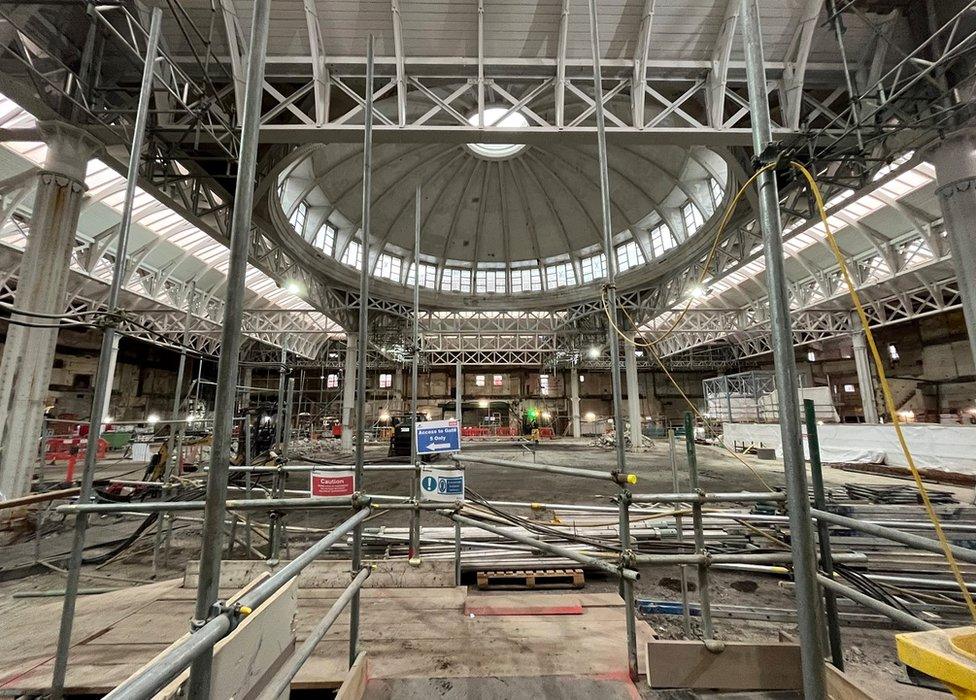
The General Market opened in 1883, although the domed ceiling had to be rebuilt due to bomb damage caused in World War Two
For more than a century Smithfield's grandiose General Market bustled with traders selling goods from their stalls, until the 1990s when it was shuttered and left to decay. Now work to bring it back into use has provided a unique snapshot of London life from across the decades, from Victorian coffee shops to hidden vaults.
"It's basically been left for 30 years deteriorating," explains Alec Shaw, above a cacophony of drilling and banging. "Water was flooding into it and a number of developers tried to develop it but failed, and then it was offered to the Museum of London."
Kitted out in hard hat and fluorescent jacket, Mr Shaw is leading the project to turn the enormous Victorian space into the new home for the Museum of London, which shut the doors to its former London Wall venue in December 2022 having run out of space for its collection.
Before it opened in the early 1880s, the General Market, with its ornate domed ceiling and iron columns, was intended for selling fruit and vegetables, its walls being decorated with items like decorative pineapples.
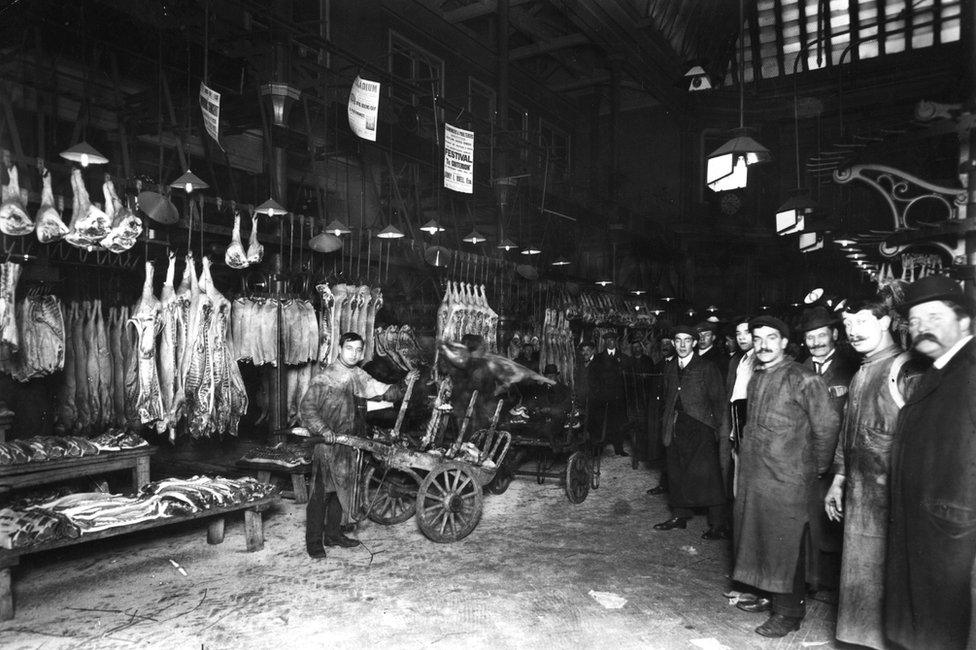
Smithfield Market was made up of a number of buildings designed by Sir Horace Jones, with the first completed in 1868
"But basically meat was so hugely popular and with fruit and vegetables being sold over in Covent Garden, this became actually a meat market... And meat was hugely popular right up until the 1970s, when it did start to dip and we were importing more meat," Mr Shaw says.
Even with the work well under way, hints of the past remain. Fireplaces appear midway up walls while there are the remnants of the staircases that would have led up to them. Dusty calendars and Page Three pin-ups from the 1990s were even discovered still hanging from the walls when the construction workers moved in.
"A number of traders [would have been] in here and then each of them would have had their own office and you can see on all the walls where their offices would have been. We want to leave that sort of imprint from the market and the layers of history," Mr Shaw says.
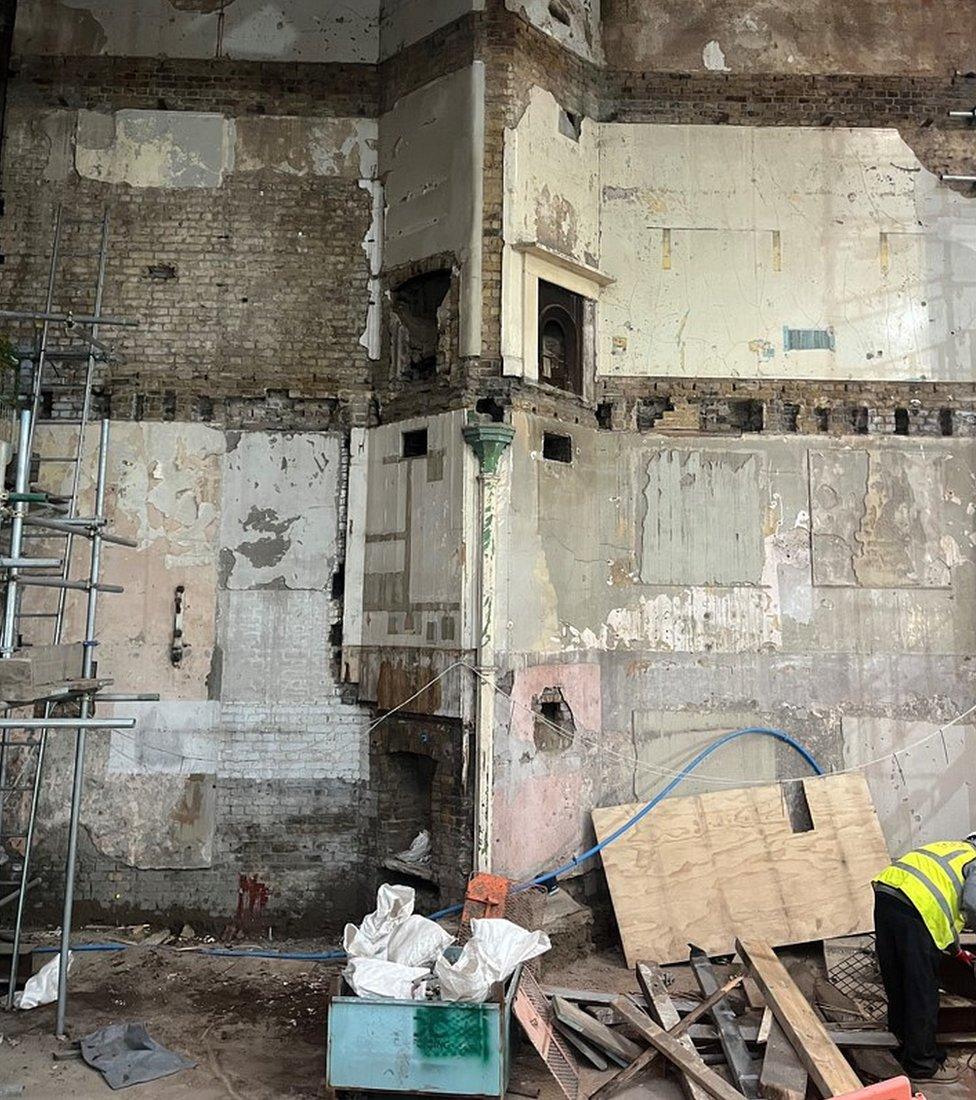

Hints of the building's past remain across the site
Heading down what will be known as the grand staircase reveals a vast chasm which stretches far into the distance beneath high vaulted ceilings. This will become home to the museum's permanent collection.
Having first been created as a massive cold store, then later being used as a salt store and a car park, it is now filled with the hums and knocks of construction work, occasionally mingling with the cymbal-sound splashes of water falling from the ceiling.
"That's one of our big challenges, to stop the water coming in," the director of the museum project says. "So we're very close to being able to do that, fixing all the roofs and then the building needs one or two years at least to dry out."
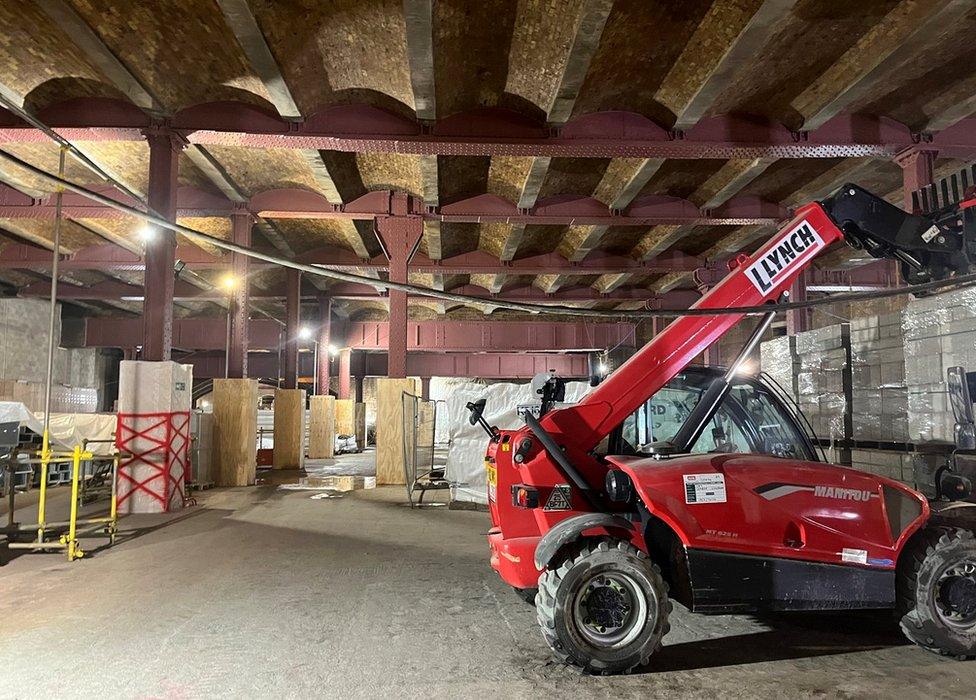
The site has previously been used as a cold store, as well as a space to keep the city's salt, and a car park
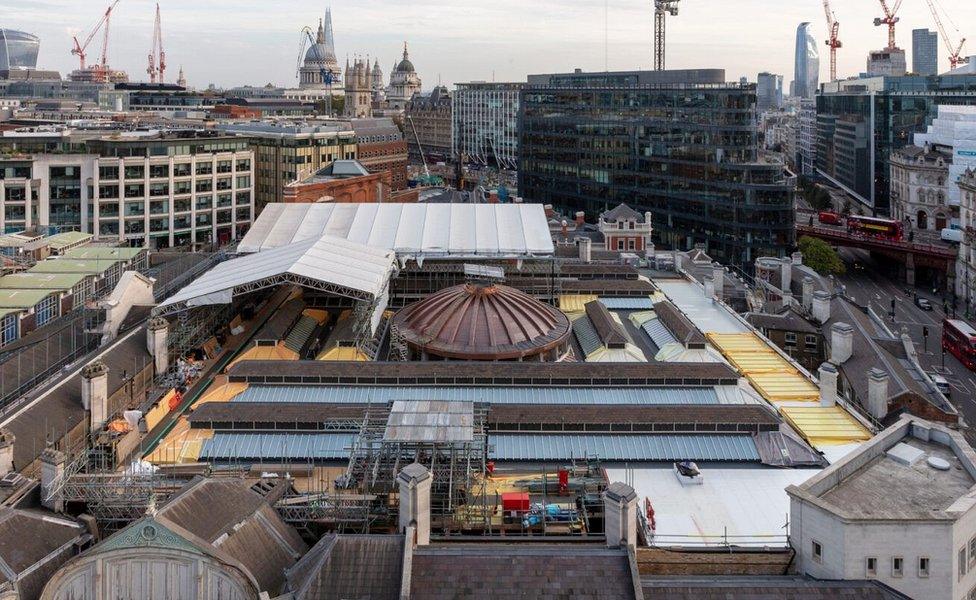
Much of the roof has been rebuilt, with large parts of the Victorian creation having caved in over time
Further along the space a new sound joins the symphony as a murmur quickly builds to a roar. Pulling back a large grey sheet reveals a train track and sidings behind a broken wire fence where Thameslink services shuttle past 24 hours a day between City Thameslink and Farringdon.
When the market was first built, architect Sir Horace Jones created it around the train tracks so that produce could be brought directly into the store. When the museum opens in 2026 those travelling on the popular commuter line across the capital will become museum objects themselves behind a huge glass window.
"Once you see the train go past, we'll talk about the infrastructure of London, physical London and how it all fits together and how complex it is," Mr Shaw explains.
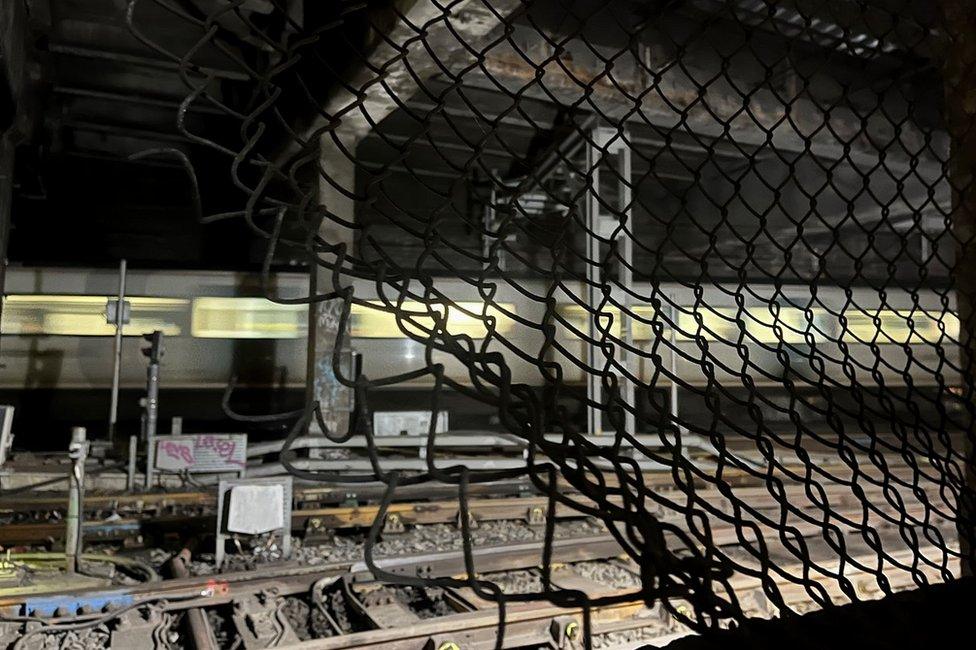
People travelling on Thameslink services will be able to see into the museum as they travel past the gallery space
Taking on such an enormous site has revealed new finds that are now being incorporated into the museum. On one side of the basement workers found a huge amount of boarding on a wall. After a few years of construction they finally took the plunge to reveal what was behind it.
"It was full of rats, it wasn't lit, you were literally walking on earth and we just slowly started to reveal more, we lit it all up, and yeah, it just revealed this."
Spreading out in front is a massive network of Victorian-built brick-lined vaults, which stretch out over 800 sq m (8,610 sq ft). It has taken more than a year to clean it up.

More than 12 months was spent cleaning the brickwork of the vaults
"You've got to imagine the brickwork was completely black. You couldn't even see these bricks on the corner, which are really incredible. And now we're looking down the view and it looks like you're looking into a mirror," he says.
Another revelation was a discovery from another part of London's history. Behind some hoarding erected in the 1970s workers found a former Lockhart's Cocoa Rooms, external - a chain of businesses similar to modern-day coffee shops created as part of the Victorian temperance movement to encourage people to drink less alcohol.
"It's just an amazing find. The tilework itself is really fantastic and we're going to basically reopen it as a cafe, but it will be called the Cocoa Room Store."
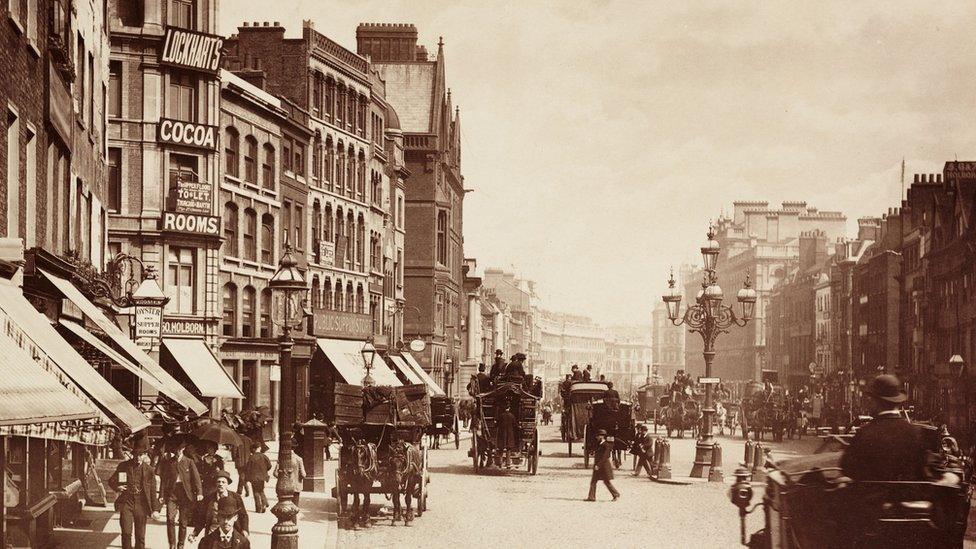
Lockhart's Cocoa Rooms, like this one in Holborn in 1890, were created as part of efforts to encourage people to drink less alcohol
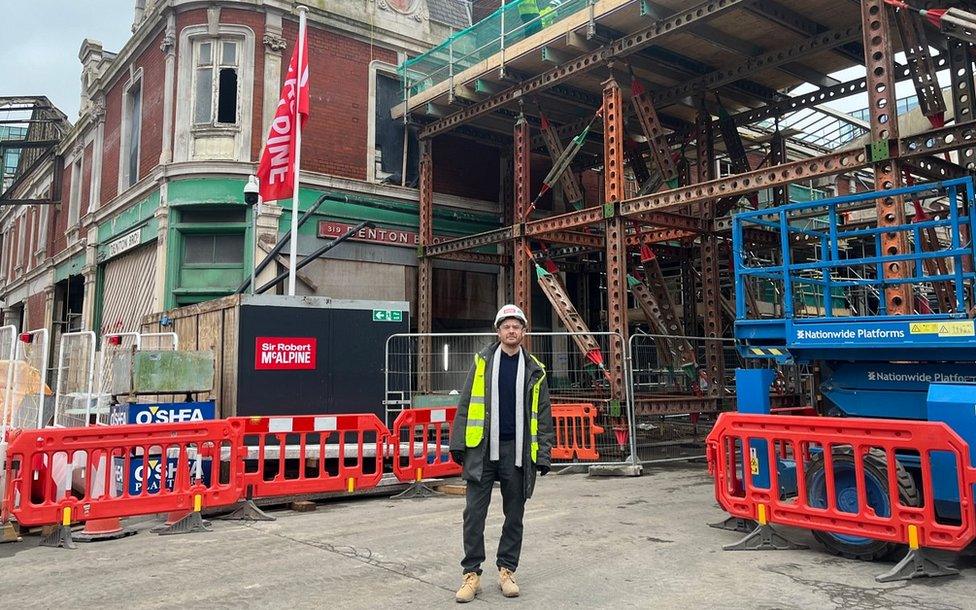
Alec Shaw in front of where the museum's Cocoa Store will be located
A part of the market the team has more recently moved into is the former Poultry Market, with the traders having only left in August.
Since then the trading stalls and offices have been ripped out to leave a vast space beneath a dramatic curved roof, which when it was built in the 1960s was the largest single-span ceiling in Europe.
This part of the museum is not expected to open until 2028, but when it does it will host temporary exhibitions, a learning centre and will be used to store the museum's remaining collection.
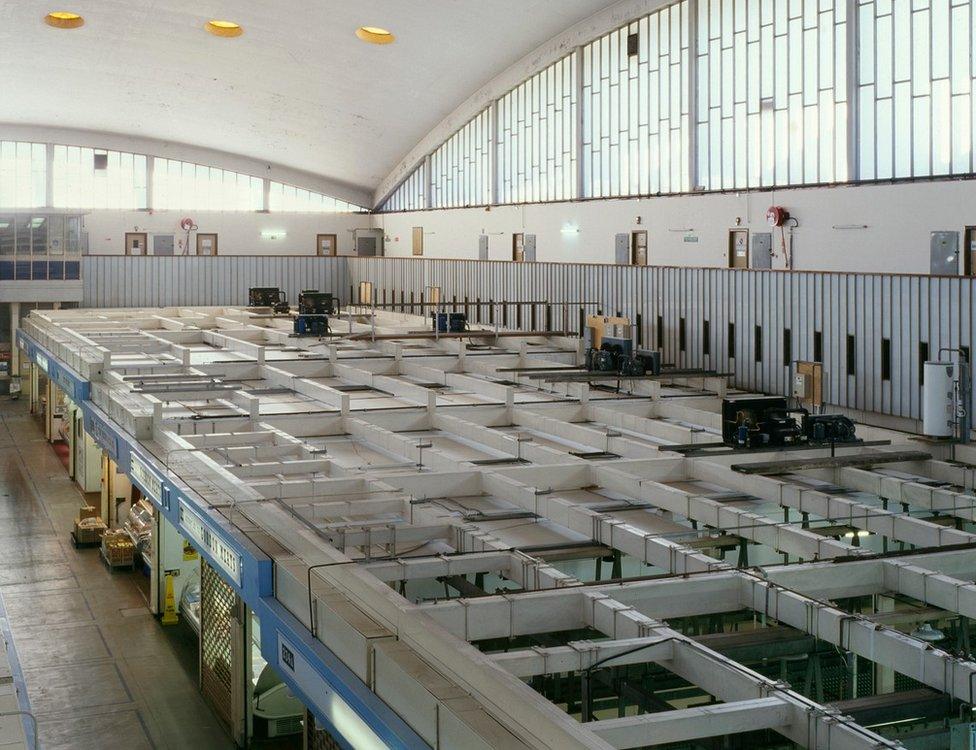
Traders only left the Poultry Market in August, with construction workers moving in the following month
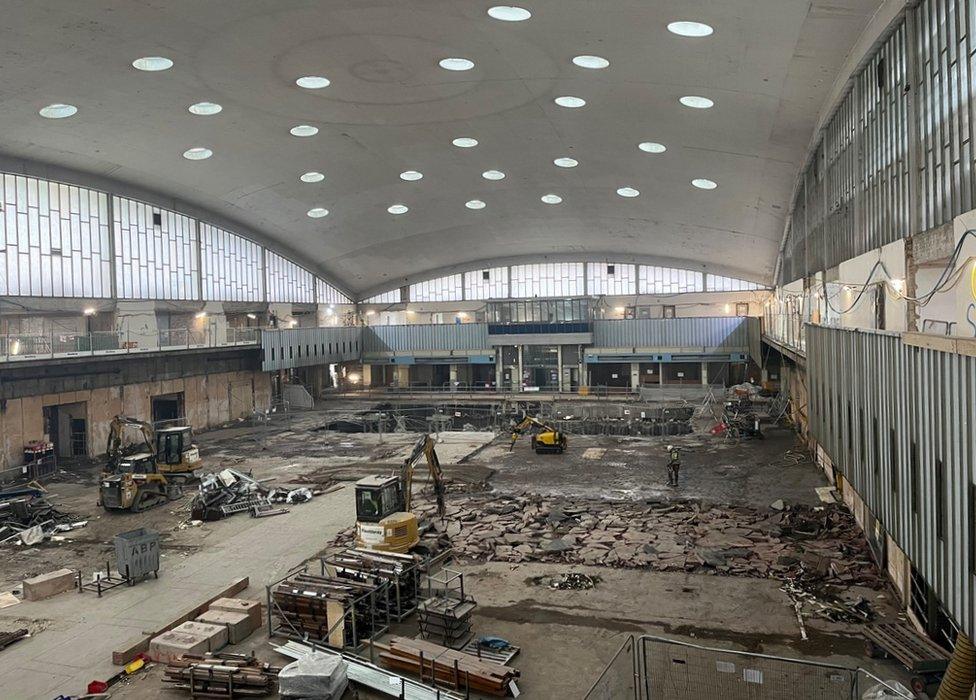
The space is currently a shell but will eventually host temporary exhibitions, a learning centre and a collection store
Such a momentous project does not come cheap, with the budget currently at £437m - the funding coming from a "partnership between the City of London Corporation, the Museum of London and the Greater London Authority, with a range of private foundations, sponsors and private philanthropy", according to the museum.
Mr Shaw believes the expense is very much worthwhile, with the work having more than one purpose.
"First of all we see it as bringing back what we call the last ruin in London, this building that sat here not doing much and we're going to bring it back to life," he says.
"The second part of the project is really making a museum that's fit for purpose for London in the 21st Century."
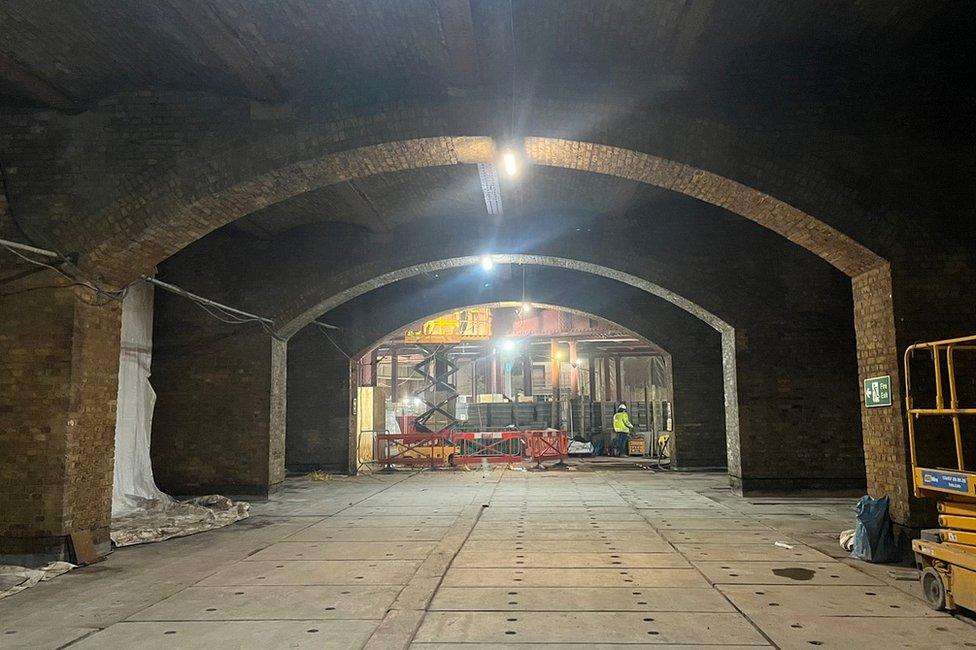
The first parts of the new museum, which will be called London Museum, will open in 2026
All images subject to copyright

Listen to the best of BBC Radio London on Sounds and follow BBC London on Facebook, external, X, external and Instagram, external. Send your story ideas to hello.bbclondon@bbc.co.uk, external
Related topics
- Published4 December 2022
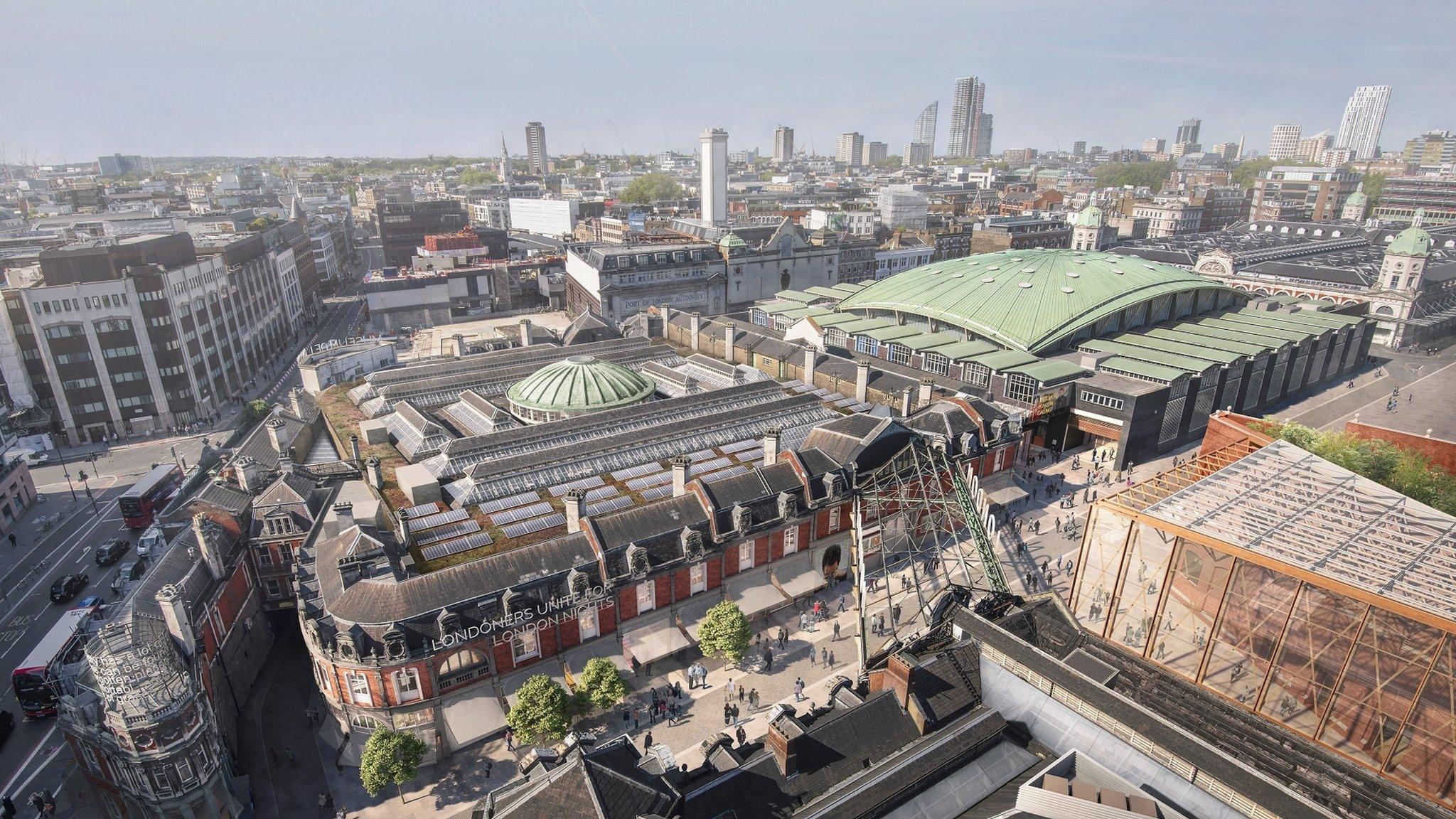
- Published10 February 2022
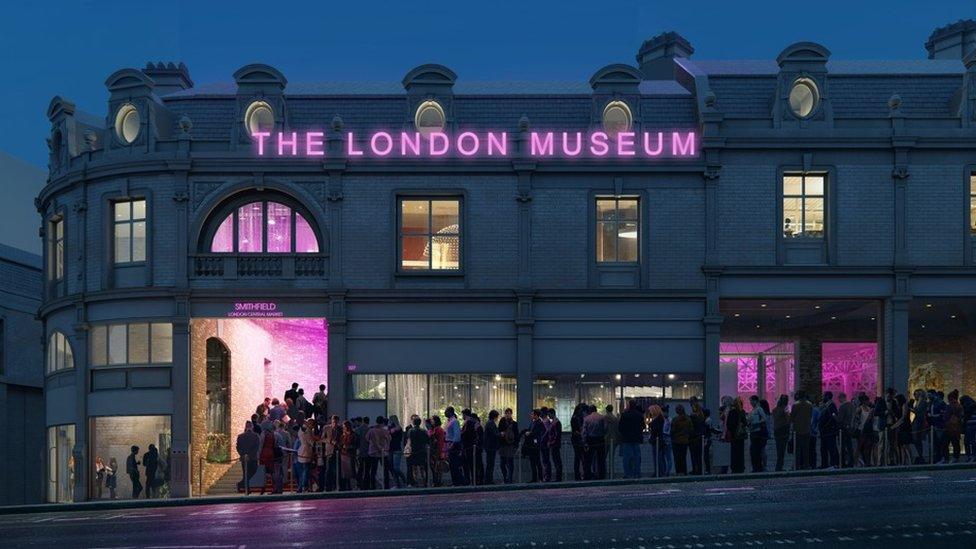
- Published25 August 2018
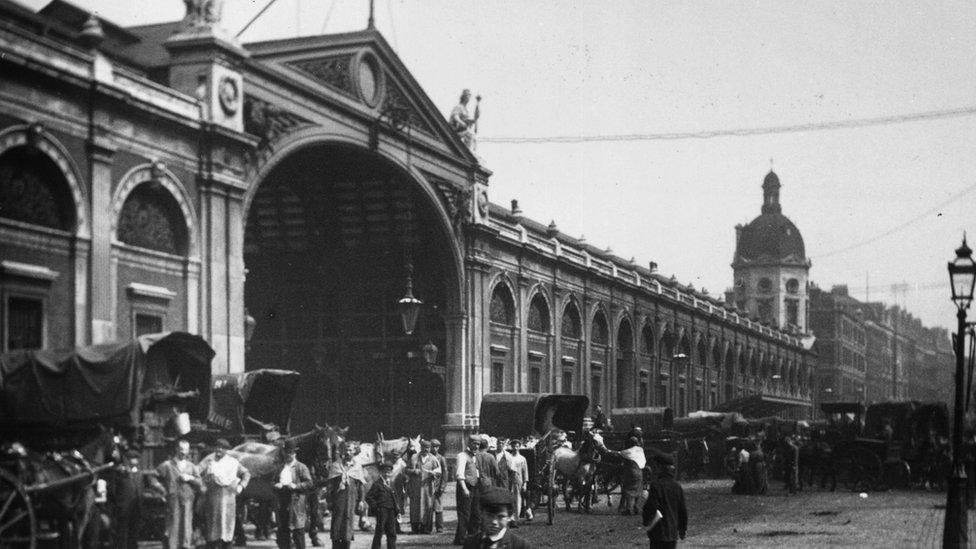
- Published24 January 2017
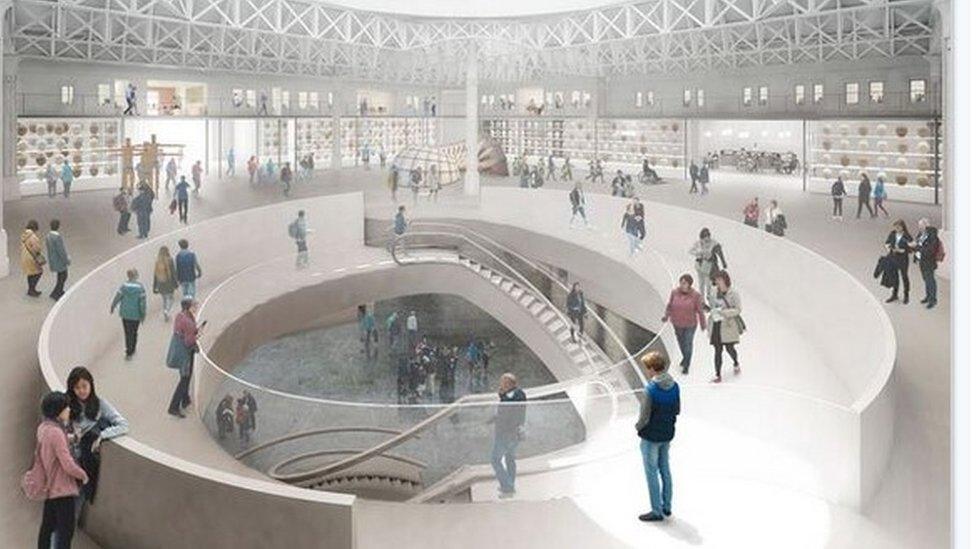
- Published27 March 2015
